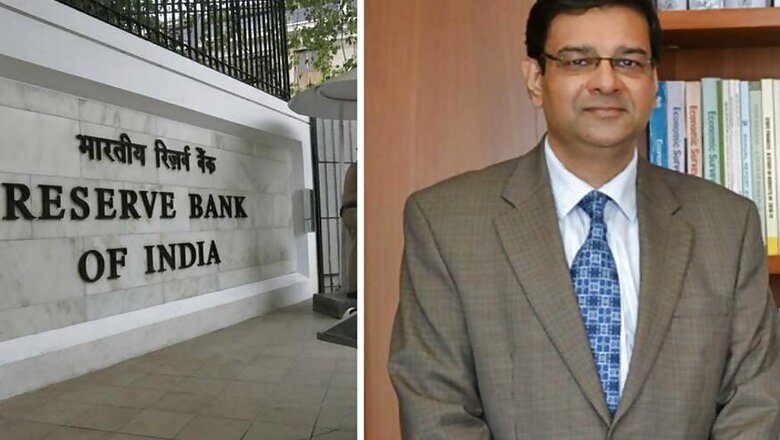
views
At 2.30 pm on Tuesday (October 4, 2016), the Reserve Bank of India (RBI) will put out its fourth bi-monthly monetary policy review. The policy, apart from being RBI Governor Urjit Patel's inaugural review, will also be first by the monetary policy committee (MPC), a newly set up rate-setting panel. The new system is billed as the biggest monetary reform measure in a generation. We take you through the details.
What is the monetary policy framework?
In February 2015, the government and the RBI agreed to adopt a monetary policy framework that made cooling inflation the central bank's main priority.
What is the MPC?
Under the new monetary policy framework, a six-member panel called the monetary policy committee (MPC) chaired by the RBI governor will decide on interest rates. The decision of the committee - three each nominated by the government and the central bank – will be binding.
The governor cannot override the panel's decision by using a veto, but can cast a vote in case of a tie. The decision will be announced at 2:30 pm on October 4 at the end of the two day meeting of the MPC.
What used to happen earlier?
In the earlier system, the governor was guided by the RBI's Monetary Policy Department (MPD). Views of the Technical Advisory Committee (TAC), a panel of experts, were also factored in while deciding on repo rate—the rate at which the central bank lends to banks. The governor, however, enjoyed overriding powers on interest rate decisions.
Who are the members of the MPC?
The three government-nominated MPC members are: Chetan Ghate, professor at Indian Statistical Institute; Pami Dua, director at Delhi School of Economics; and Ravindra Dholakia, professor at Indian Institute of Management, Ahmedabad. The other members of the committee will include RBI governor Urjit Patel, deputy governor R. Gandhi, who is in charge of the monetary policy, and executive director Michael Patra.
What targets have been set on inflation?
The RBI and the government have set a retail inflation target of 4 per cent for the next five years with an upper tolerance level of 6 percent and lower limit of 2 percent. Inflation levels above 6 per cent will mean the economy has hit a danger zone. High inflation means prices are rapidly rising eroding people's buying power as it makes the rupee go less far. Conversely, very low inflation levels can be symptomatic of an economy-wide slide because of weak demand and muted investment activity.
What necessitated the change?
The move is primarily aimed at eliminating speculation in RBI's interest rate decisions. The RBI has to juggle many roles, and, on many occasions it can lead to conflict of interests. For instance, when inflation is rising the central bank is generally expected to raise interest rates to slow down demand and tame price rise.
But, the RBI is also the public debt manager. In its capacity as the government's sole merchant banker and sovereign bond regulator, its aim is to maintain low interest rates. The new framework removes such ambiguities by making inflation targeting the central bank's primary focus. Effectively, it implies that RBI will choose inflation management as its first choice should a toss-up were to be made between multiple goals.
How are interest rates fixed in other countries?
A multi-member panel to decide on interest rates have become a standard practice in many matured economies, such as the USA and England. In the US, the 12-member Federal Open Market Committee or FOMC decides on the Fed funds rate.
The seven board members of the FOMC are appointed by the President and ratified by the Senate. Five other members, who are heads of regional reserve banks are also member of the FOMC. Each member has one vote.
The Bank of England's monetary policy committee has nine members. These include the governor, three deputy governors and the chief economist of the Bank of England. Four external members appointed by the Chancellor. Each member has one vote. The Treasury representative attends the meeting but has no vote.




















Comments
0 comment